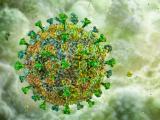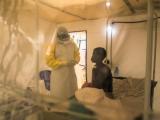For the first time in more than a year, Guinea passed a week without a new lab-confirmed Ebola case, but the news out of West Africa last week was tempered by a flare-up of activity in Sierra Leone, the World Health Organization (WHO) reported today in its latest update.
In Sierra Leone, new cases have been detected in two areas: Kambia district, which is battling a cluster of cases, and Bombali district, where a 16-year-old girl's Ebola death triggered the deployment of a rapid response team.
Guinea hasn't reported a case since Sep 1, when the last illness was detected in a transmission chain in Conakry's Ratoma area. The WHO added, however, that 200 contacts are still being monitored in the capital and in Dubreka district. Responders are on high alert, because 23 contacts have been lost to monitoring over the past 42 days, at least one of them considered high risk.
Of the five cases reported in Sierra Leone last week, four involved high-risk contacts who are part of a transmission chain in Kambia district. The WHO said all four were close relatives of the cluster's index case, a 67-year-old woman who died from her illness at the end of August. About 40 contacts are still being monitored in the woman's village.
Rapid response, quarantine in Sierra Leone
The fifth case was reported from Bombali district on Sep 13, in a 16-year-old girl who was sick in her community for several days before she died. The source of her illness is under investigation, according to the WHO, though media reports said health officials suspected one of the possibilities could have been sexual contact with an Ebola survivor.
Until the girl's infection was identified, the district hadn't reported an Ebola case in more than 5 months.
The WHO said about 600 of the 800 people in the girl's community have been identified as contacts, including 18 who are considered high-risk contacts. In a separate report today, the WHO said the inter-agency rapid response includes teams of contact tracers, along with surveillance and psychosocial officers assigned to monitor 70 quarantined homes. In addition, the village borders have been sealed and food has been distributed to the households.
Emmanuel Konteh, a coordinator for the district, said in the statement, "The fact that we have been able to classify all the high-risk contacts by the second day proves that this has been a well-coordinated response with our partners."
Overall, the number of confirmed, probable, and suspected Ebola cases in the outbreak region is at 28,220, which includes 11,291 deaths, the WHO said. No new healthcare worker infections were reported last week, keeping those totals at 881 cases, 513 of them fatal.
Study: Ebola tests useful for semen
In research developments, the possibility of lingering Ebola virus viability in the semen of male survivors has fueled concerns about sexual activity as a risk factor for disease recurrence in the Ebola-hit countries. In April, a gene study built a strong case for semen as the transmission source of a Liberian woman's infection in April, and health officials have wondered if male survivors should be routinely screened for the virus.
In a new study, researchers from the National Institute of Allergy and Infectious Diseases (NIAID) assessed whether tests approved under a US Food and Drug Administration (FDA) Emergency Use Authorization for detecting viral RNA in blood and plasma can also be used to test semen and blood in outbreak countries. They reported their findings yesterday in an early online edition of the Journal of Infectious Diseases.
The team found that the tests were able to detect Ebola RNA in both semen and blood, with no loss in sensitivity. They noted that the findings need to be assessed in field settings, but they concluded that the results should clear the way for the tests to be used for semen screening in Ebola survivors.
See also:
Sep 16 WHO update
Sep 16 WHO report on Bombali rapid response
Sep 15 J Infect Dis abstract
May 1 CIDRAP News story "Probe of recent Liberian death finds Ebola sexual transmission clues"

















